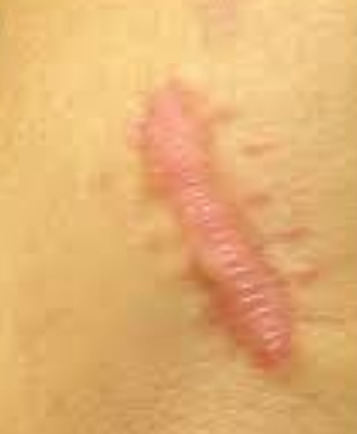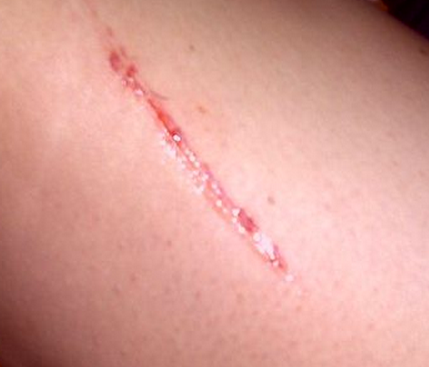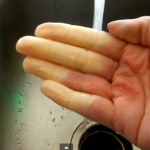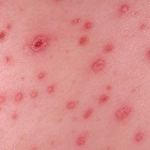Hypertrophic scars refer to a cutaneous skin condition identified by a buildup of increased quantities of collagen eventually resulting in the development of a raised scar. They are not as severe as keloids.
Just like keloids, hypertrophic scars typically develop at the sites of body piercings, pimples, burns, and cuts. They may contain blood vessels and nerves. Hypertrophicscars may form after a traumatic or thermal injury that affects the deep dermis layers and show elevated levels of TGF-β.
These scars cannot be completely avoided or prevented. Hence, patients may consult a doctor to verify the ways in which the scars can be removed. There are many hypertrophic scar treatment options which can help change them into paler and flatter scars.
Hypertrophic scars Vs. Keloid scars – The Difference
The degree of scarring associated with hypertrophicscars is less than keloid scars. The latter tends to extend from the affected region and continues growing even after the injury has fully healed. Even though, hypertrophic and keloid scars are often paired together in medical deliberations, and may look slightly similar, they majorly vary in severity and manageability.
Symptoms of hypertrophic scars
Some of the signs and symptoms are listed below:
- Hypertrophic scars are thick and reddish.
- They can result in pain or itchiness
- They do not spread outside the borders of the original wound. They can however keep thickening for nearly 6 months.
- Hypertrophic scars tend to become better after one to two years. Patients may however feel distressed due to the itchiness or their appearance.
- In case the scars form next to a joint, then it can limit the range of motion.
Causes
- The normal healing process of a wound causes the body to produce new collagen fibers at a speed that is sufficient for balancing the destruction of old collagen. The collagen fibers may develop in different directions instead of forming parallel to the surface of skin. The accumulation of excess collagen is what causes the creation of a characteristic elevated area of tissue referred to as a hypertrophic scar.
- Hypertrophic scars generally occur in those parts of the body where the skin is tighter or which consist of additional muscle tissues, like the chest, the upper back, and the back side of the shoulders.
- Both hypertrophic scars and keloids affect around five to fifteen percent of the general population. There is no distinction between men and women. However, keloids are 15 times more likely to occur in the non-white population as compared to hypertrophic scars. Also, even though hypertrophic scars can occur in people of all races and ethnicities, it is more common in Hispanics, African Americans, and Asians than Caucasians.
- Hypertrophic scars as well as keloids typically affect people between puberty and 30 years of age. It is not so common in younger children as well as older adults.
- Some people have a genetic or hereditary predisposition to developing keloids or hypertrophic scars.
Treatment of hypertrophic scars
Hypertrophicscars are treated in the following ways:
- Steroid injections: It is a common treatment option for hypertrophic scars. Triamcinolone is directly into the scars in affected individuals every 4 to 6 weeks. The injections flatten the scar, lighten its color, and decrease its size. The treatment has negligible side effects and is very effective. The treatment results are also permanent. However, the healing period can be quite lengthy.
- Silicone treatment: Patients can also use silicone to decrease hypertrophic scarring. Affected people need to visit a dermatologist before going for silicone treatment. It involves the use of OTC or prescription silicone sheets which are placed above the scar region along with additional pressure. Multiple applications will ultimately decrease the size of the scar. Silicone treatment works better on new hypertrophic scars as opposed to older scars.
- Laser treatment: The most common type of laser treatment for hypertrophic scars reduction is PDL or Pulsed Dye Laser treatment. It involves the use of high-intensity laser rays that puncture the surface of skin and destroy the blood vessels in a specific area. This promotes generation of new cells, normal growth of collagen, and healing of the scar from within. PDL is one of the best ways to reduce and flatten hypertrophic scars. The treatment may result in dark patches of skin or hyperpigmentation in light-skinned individuals, and light skin patches or hypopigmentation in people with darker skin.
- Surgery:If hypertrophic scars do not resolve via non-surgical means, then affected individuals can opt for surgery. A doctor will surgically remove the entire scar after placing the patient under anesthesia. After the surgical procedure is over, additional treatment such as use of silicone gel or sheets, compression bandages, etc. is recommended for scar reduction. Surgical removal of hypertrophic scars can cause complications like recurrence of scar across a bigger area of skin, delayed recovery, increased scarring, pain, infection, and the need for more surgical procedures.
Hypertrophic scars pictures




what are the treatment process of hypertrophic lichen planus in 13 years boy
is it serious
please advise
Please I have this scar at my knee very dark and at my foot it just appear on my legs there was no wound on my key but I just saw it developing please what cause it and what is the best treatment for it
please i have a swollen c-section scar for one year now what causes that and how to remove this big swollen inches scar
My daughteris 10 years now .she has burn scar on her upper arm .she got these scars when she was just nine months old.she don’t has any irritation or redness on her scars . Can u guide what kind of scars are they and the possible treatments according to her age.I am sending photos of scars .Kindly answer